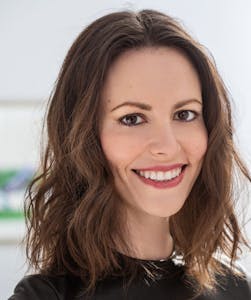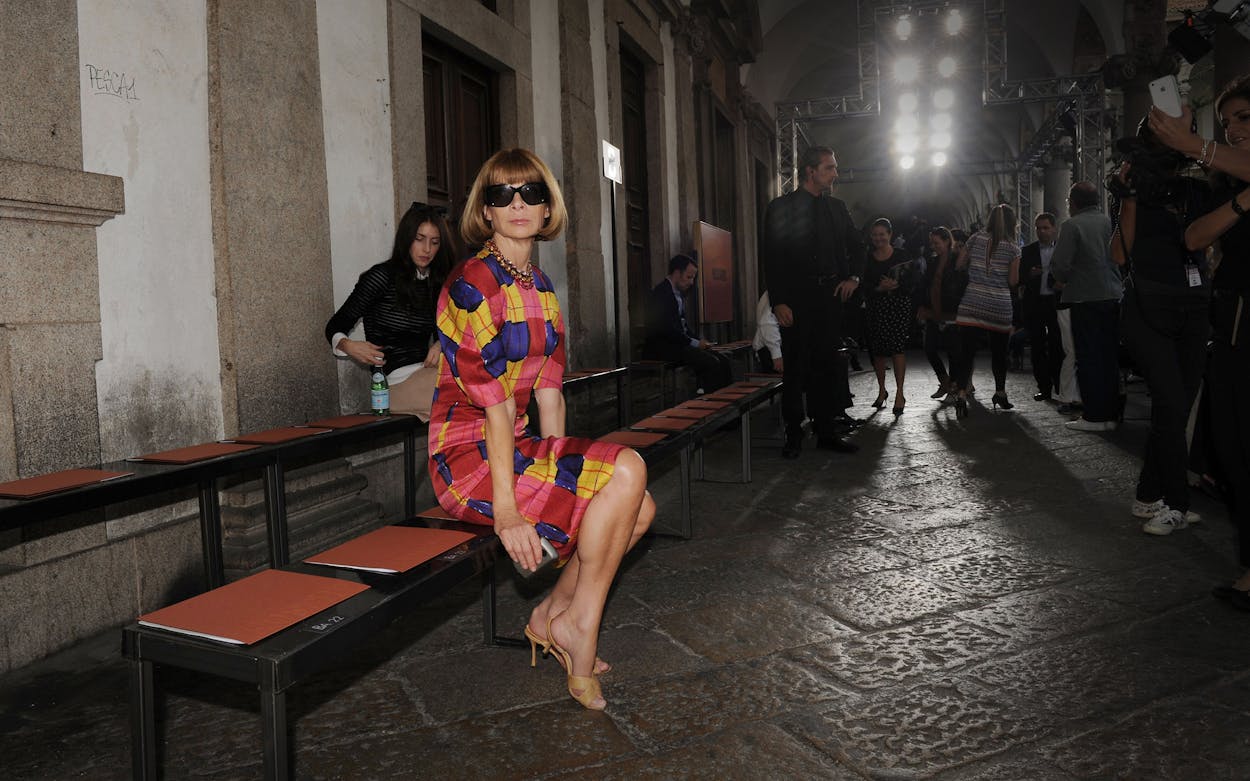When Amy Odell began working on a biography of Anna Wintour in 2018, she had no idea if the enigmatic Vogue editor in chief would sanction the book or use her considerable powers to shut the project down. “About a year and a half into my research, her office got wind of the book, and Anna approved a list of people for me to talk to,” says Odell. After she ran through that list, Odell sent more names to be approved. “She said yes to every single person,” says Odell. She ended up interviewing more than 250 sources for the book, many who had never gone on the record about Wintour before.
Anna: The Biography (Simon & Schuster, May) pulls off a rare feat. It’s a comprehensive and balanced look at Wintour’s long, storied, and often controversial career, but it’s also a great read. Wintour’s story was a lot to take on: over the years, the fashion titan has been criticized for a litany of bad behaviors, including hiring “princess[es]” and “socialite[s]” as her assistants and promoting unhealthy weight standards (she once asked to have the fat around a baby’s neck retouched in a photo). She’s also been accused of fostering racism at Vogue and supporting a culture that sidelined women of color. But at 72, she’s still in one of the most powerful positions in media, with no signs of stepping down. Odell’s book closely examines every step of her rise to the top and how she’s stayed there for so long despite the scandals.
No fashion-world slouch herself, Austin native Odell launched New York magazine’s fashion blog the Cut and was the digital editor of Cosmopolitan. Her first book, Tales from the Back Row: An Outsider’s View From Inside the Fashion Industry, came out in 2016. But as she sees it, her world couldn’t be further from the one Anna came from (“I grew up wearing flip-flops and shorts, and Anna was wearing, I don’t know, Missoni”) she says. Texas Monthly caught up with Odell to talk about her iconic subject, writing a book during the COVID-19 pandemic, and what she misses most about Austin.

Texas Monthly: How did you come up with the idea to write a biography of one of the most legendary—and, frankly, feared—women in the fashion industry?
Amy Odell: My literary agent called me about the project to see if I’d be interested, but I was about to go into labor with my son. I really wanted to do it—I had worked with the publisher on my first book, so I told my agent, “That sounds interesting, I’m happy to talk to them, but I’m going to have a baby like any second.” I had my son the next day. After some time off, I wrote a book proposal. The book took so long to write that I got pregnant with my daughter, and they edited it while I was on leave having her.
TM: Wow, that is some timing. Congratulations! So, you worked on the book for nearly four years and interviewed more than 250 people from all stages of Wintour’s life—from her school friends in London to the late André Leon Talley, one of her closest confidantes (and harshest critics). And you had two babies in the middle of it? All of that must have been a massive undertaking, especially during the pandemic.
AO: Being pregnant and having a baby during the pandemic was crazy. All my research was done over the phone, which in a sense is easier than running around interviewing people, but it’s also nice to be able to meet in person. I did spend a lot of time at the New York Public Library, reading hundreds of letters written by Anna’s father [Charles Wintour, the editor of London’s Evening Standard]. I loved that part—most of them were handwritten and very hard to read; it brought me back to being in school.
TM:. The public’s fascination with Wintour doesn’t ever seem to wane. From her signature bob and sunglasses to her Starbucks habit and odd lunch orders [caprese salad, no tomatoes] people are obsessed. Why do you think that is, and was that part of why you wanted to write about her?
AO: I didn’t realize the caprese detail was going to be such a thing! I thought it was a delicious detail, no pun intended. It’s just really interesting the way the public has built her up as a celebrity. The Devil Wears Prada—the movie in particular—had this remarkable effect on her image and made her so well-known. But, even as long as she’s been in power, she remains a mystery. I wanted to pull back the curtain on who she is and what she’s like as a person. For instance, she’s known for not making small talk at work, which is very disarming. Many people mentioned that she “compartmentalizes.” You could have a friendly interaction with her outside the office—one person told me about going bowling with her, and others have mentioned that she can be very charming and fun at a party—but the next day at work, you see her and it’s like it never happened. I think that’s enabled her success. If you’re not worried about who your friends are, then you can make those difficult decisions that businesspeople feel they have to make.
TM: You met Anna twice, unconnected to your book—once for a job interview and later to pitch ideas. Were you nervous about meeting her? How did those encounters inform your book?
AO: I was incredibly nervous and intimidated, but I prepared by doing research and asking around, to friends of friends who’d worked with her, on what to expect. Some of these things I talk about in my book, like the fact that she doesn’t like all-black outfits—she likes printed dresses and colors. Meetings are fast—if you get fifteen minutes with her, that’s good. She was perfectly nice both times. I wrote about our 2015 meeting in my first book, and people were more interested in that than in anything else.
TM: Wintour has also been accused of fostering racism at Vogue and supporting a culture that sidelined women of color. She apologized, and she still has her job. Do you have a sense of how she’ll manage going forward?
AO: All you have to do is look at the covers of Vogue over the course of Anna’s tenure to see where diversity ranked as a priority for her. There are a number of stories in the book that illustrate her attitude toward diversity over much of her tenure. The turning point for her and Vogue was the summer of 2020. Given Condé Nast is unionizing—Vogue included—and the union has called out diversity as a priority, this is going to be something she will have to continue to manage.
TM: It was a fun surprise to find a Texas connection in your book. You even mention Texas Monthly; how did that come about?
AO: Anna had a long relationship with Shelby Bryan, a Houston executive and entrepreneur. I read up on him in Texas Monthly and interviewed him for the book. He told me about a trip they took to Houston, and—I feel like the story is so Anna—Bryan wanted to show her his hometown of Freeport, which has the Dow Chemical plant and a beach that’s named for his family. He felt like if she were to understand who he was, she needed to see where he came from. He drove her there, and she was silent the whole way. “Anna, what do you think?” he asked. “It’s worse than I imagined,” she said, and she never got out of the car.
TM: Speaking of Texans, did you have an interest in fashion growing up?
AO: It’s so funny; I think all the time, “How did I end up coming from Austin and writing a biography of Anna Wintour?” I grew up wearing flip-flops and shorts—I loved magazines like Seventeen when I was younger, but I didn’t really know what fashion was until I got to New York and actually started covering it as a journalist.
TM: Well, it’s too hot in Texas to wear much else. Do you miss Austin?
AO: Yes! Where to start—I miss my family, I miss the sun, I miss the food, the relaxed vibe. Plus, it’s hard to get a good margarita in New York.
This interview has been condensed and edited for clarity.
- More About:
- Style & Design
- Books
- Fashion
- Austin








